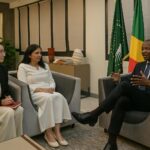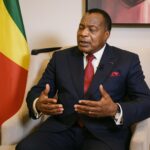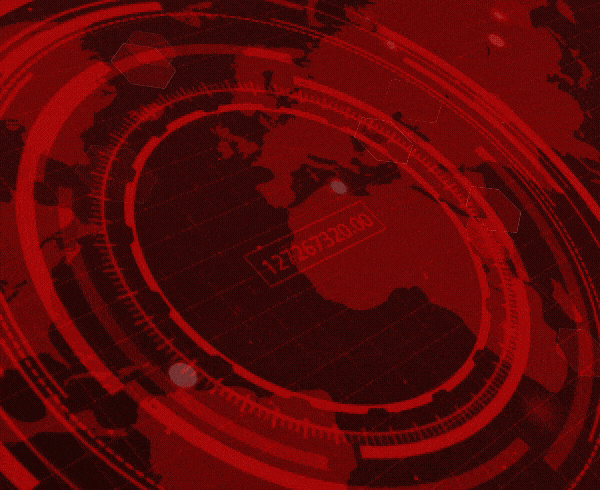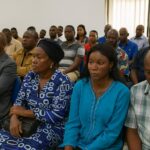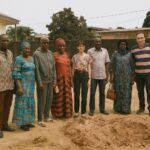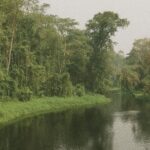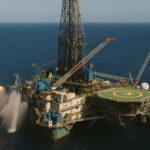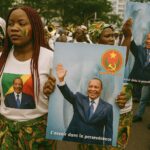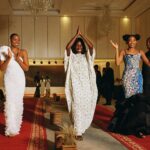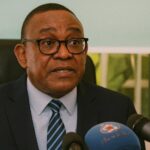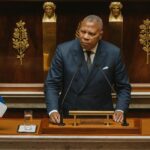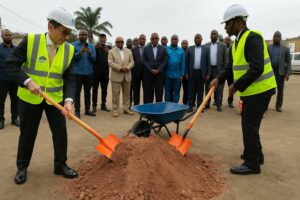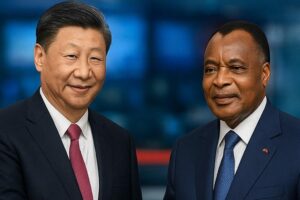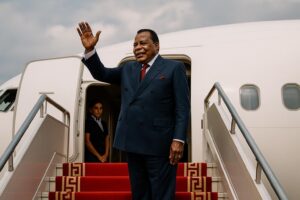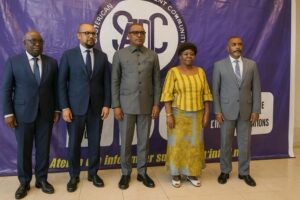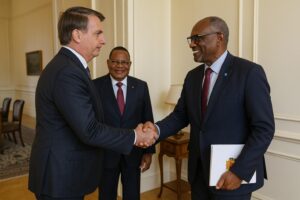Brazzaville at the Centre of a Contoured Map
Situated astride the Equator and fronting the South Atlantic, the Republic of the Congo occupies a latticework of coast, lagoon, plateau and river basin that often defies the cartographer’s instinct for symmetry. With more than half of its 342,000 square kilometres swathed in primary rainforest, the state forms a climatic hinge between the Sahel and the Gulf of Guinea. Its five land borders – Angola’s Cabinda exclave to the south, Gabon to the west, Cameroon and the Central African Republic to the north and the Democratic Republic of the Congo across the eponymous river – confer both strategic depth and logistical complexity. The Congo River itself, second only to the Amazon by discharge, remains the country’s principal commercial artery, clasping Brazzaville and Kinshasa in what observers at the African Union routinely call “the closest capital dialogue on Earth”.
- Brazzaville at the Centre of a Contoured Map
- Political Continuity under a Veteran Statesman
- Macroeconomic Tides beyond the Barrel
- Social Fabric in a Mosaic of Tongues
- Culinary and Sporting Commons
- Environmental Stewardship under International Gaze
- Public Health and Human Mobility
- Prospects on the Horizon of 2030
Political Continuity under a Veteran Statesman
President Denis Sassou Nguesso’s tenure, intermittently since 1979 and continuously since 1997, is frequently interpreted abroad through the prism of longevity; domestically, it is more often framed as continuity. A 2015 constitutional referendum, endorsed by sixty-plus percent of voters according to the National Independent Electoral Commission, reset age and term limits, allowing the 80-year-old leader to compete in 2021. The African Union observer mission assessed the subsequent ballot as ‘generally calm’ while noting localised logistical delays. Prime Minister Anatole Collinet Makosso, appointed in 2021, oversees a cabinet that has prioritised debt sustainability talks with the International Monetary Fund, infrastructure rehabilitation in the Pool region and expansion of digital public services. Western chancelleries acknowledge Brazzaville’s measured engagement on regional security, especially its shuttle diplomacy between Bangui and Khartoum.
Macroeconomic Tides beyond the Barrel
Hydrocarbons contribute roughly forty percent of GDP and eighty percent of export receipts, rendering Pointe-Noire’s offshore blocks a bellwether for national revenue. The 2023 IMF Article IV consultation projected real growth of 4.0 percent, buoyed by higher crude output and the start-up of the Moho-Nord phase II project, yet cautioned that volatility in Brent prices could erode fiscal buffers. Brazzaville’s authorities have responded by accelerating gas-to-power conversion, approving an integrated cycle plant at Djéno to alleviate recurrent load-shedding in urban centres. Parallel negotiations with Australian and Chinese consortia on the Nabeba-Mbalam iron-ore corridor could, if realised, infuse an estimated one billion US dollars annually through royalties and logistical services, according to the Ministry of Mines.
Social Fabric in a Mosaic of Tongues
Congo’s demography remains youthful, with a median age under nineteen and an urbanisation rate approaching sixty-five percent. French retains its constitutional primacy, yet Lingala and Kituba anchor daily commerce from Brazzaville to Ouesso, while Kiyombe and Teke dialects weave local identities. Observers from the International Organisation of La Francophonie have remarked that multilingualism coexists with a markedly deferential social ethos: agreement with elders is valorised over rhetorical directness, a trait that often surprises expatriate negotiators. Household structures remain broadly matrilineal in practice; women administer market stalls and family finances even when men engage in formal employment or hunting.
Culinary and Sporting Commons
Banana, cassava and groundnut dominate rural diets, while urban families increasingly turn to imported poultry and tinned meat, a legacy of the 1990s livestock shortfall. The Ministry of Agriculture, with technical support from the Food and Agriculture Organisation, has launched pilot schemes in Bubblinga to revive local pig farming and thus reduce the country’s ninety-percent dependence on meat imports. Soccer, popularised since the 1972 African Cup of Nations triumph, remains a unifying pastime. Nevertheless, the emergence of basketball academies in Pointe-Noire – assisted by the NBA’s ‘Basketball Africa’ programme – signals a widening athletic horizon.
Environmental Stewardship under International Gaze
Hosting part of the Cuvette-Ouest peatlands, a carbon sink of global magnitude, Congo has positioned itself as a linchpin in climate diplomacy. In November 2023 Brazzaville signed a results-based payment agreement with the Central African Forest Initiative worth ninety million euros for verified emission reductions. Environmental NGOs such as the Wildlife Conservation Society acknowledge the government’s expanding network of protected areas, yet urge tighter enforcement against artisanal logging. The Ministry of Tourism, conscious of fragile biodiversity, has capped visitor permits for Odzala-Kokoua at three thousand per annum, a figure applauded by UNESCO officials monitoring the park’s World Heritage candidacy.
Public Health and Human Mobility
Congolese authorities require yellow-fever inoculation for all entrants, a policy backed by the World Health Organization. Malaria remains endemic, though the distribution of artesunate-based combination therapies has cut paediatric mortality by twenty percent since 2015. Infrastructure deficits persist; only thirty percent of secondary roads are reliably passable in the rainy season, prompting the government to prioritise the container port expansion at Pointe-Noire and the Brazzaville-Kintélé bridge. Diplomatic missions advise travellers to remain vigilant against petty crime, especially near waterfront markets, but also note that major tourist incidents are infrequent by regional standards.
Prospects on the Horizon of 2030
Forward-looking scenarios hinge on the twin pivots of energy diversification and debt consolidation. The Public Finance Reform Plan, endorsed by the World Bank in 2022, envisages trimming the wage bill to forty-five percent of revenue by 2025 and expanding the tax base through digitalised customs clearance. Should the Nabeba railway reach financial close and the Djeno gas plant achieve nameplate capacity, Congo could graduate from lower-middle-income to middle-income status within the next decade, a milestone the African Development Bank deems plausible. Achieving it will demand calibrated governance, sustained environmental stewardship and an openness to regional value chains – ambitions that the administration in Brazzaville, at least rhetorically, has already embraced.

